Comments / Questions (19)
![]() Barbara wrote:
Barbara wrote:
Ist das in der Zeichnung angegebene Maß für den Umfang richtig? Es scheint mir etwas eng für die Größen. LG
09.10.2018 - 07:15DROPS Design answered:
Liebe Barbara, die cm in die Maßskizze stimmen alle, aber die geben die Breite wenn die Arbeit/der Pullover flach liegt, und nicht den Umfang - mehr lesen Sie hier. Viel Spaß beim stricken!
09.10.2018 - 09:53
![]() Sandra wrote:
Sandra wrote:
Autre question : Le pull se tricote au point de blé mais l'échantillon est fait à partir du point de riz. Est-ce une erreur ? Faut-il faire l'échantillon au point de blé ou au point de riz ?
18.09.2018 - 13:39DROPS Design answered:
Bonjour Sandra, l'échantillon se fait au point de blé (correction faite, merci). Bon tricot!
18.09.2018 - 15:06
![]() Sandra wrote:
Sandra wrote:
Bonjour, j'aime beaucoup ce modèle mais je ne suis pas fan des manches 3/4. Est-il possible de le tricoter avec des manches de longueur normale et si oui quelles modifications apporter ? Merci. Cordialement. Sandra
18.09.2018 - 13:23DROPS Design answered:
Bonjour Sandra, vous pouvez vous aider d'un modèle de même tension avec des manches longues pour ajuster les modifications nécessaire pour votre taille et la longueur souhaitée. Bon tricot!
18.09.2018 - 15:05
![]() Sara wrote:
Sara wrote:
Ciao! Vorrei realizzare questo modello il filato Drops loves you #9. Che è un filato del gruppo A ma il convertitore di filati non me lo ha inserito tra le possibilità. Magari, ho pensato, potrei lavorare con due gomitoli contemporaneamente di Drops love you #9 e ferri numero 6. Posso farlo? E nel caso ci sono modifiche da apportare? Cosa mi consigliate? Grazie
19.04.2018 - 08:57DROPS Design answered:
Buongiorno Sara. A questa pagina trova le indicazioni per calcolare la quantità necessaria del filato da lei scelto. Le consigliamo di lavorare con il numero di ferri che le consentono di ottenere lo stesso campione indicato nel modello. In caso contrario potrebbe essere necessario riproporzionare il numero delle maglie. Per un aiuto più personalizzato, può contattare il suo rivenditore Drops di fiducia. Buon lavoro!
19.04.2018 - 12:15
![]() Anne Stendys wrote:
Anne Stendys wrote:
Er det korrekt, at der skal tages masker ud før ribkanten nederst på trøjen?
08.04.2018 - 22:07DROPS Design answered:
Hej Anne, ja det stemmer du tager ud inden du strikker ribkanten på pinde 6. God fornøjelse!
09.04.2018 - 12:17
![]() Pascale wrote:
Pascale wrote:
Bonjour Pour faire le pull Le Conquet , si je prends la couleur Alpaca Gris Aqua ref 8120 quelle couleur puis je associer en kid Silk ? Bien cordialement Pascale
26.03.2018 - 22:38DROPS Design answered:
Bonjour Pascale, pour toute aide dans le choix des couleurs, vous pouvez volontiers contacter votre magasin DROPS, même par mail ou téléphone. Bon tricot!
28.03.2018 - 14:58
![]() Lisa wrote:
Lisa wrote:
The three quarter sleeves and light color are perfect for spring!
19.12.2017 - 22:16
![]() AnniePBleau wrote:
AnniePBleau wrote:
Mon préféré qui est 1/2 saison. Il est bien dans l'air du temps et facile à enfiler sur une chemise ou un sous pull. Vivement qu'il soit disponible.
14.12.2017 - 17:54
![]() Véronique wrote:
Véronique wrote:
Sensualité de la maille et du point . J'aime les modèles aux manches 3/4 et aux emmanchures raglan (fantaisies ) .
11.12.2017 - 16:38
Le Conquet Jumper#leconquetjumper |
|||||||
|
|
|||||||
Jumper with raglan, moss stitch and ¾ sleeves, knitted top down. Size: S - XXXL Piece is knitted in 1 strand DROPS Alpaca and 2 strands DROPS Kid-Silk.
DROPS 191-14 |
|||||||
|
INFORMATION FOR PATTERN: INCREASE TIP: To calculate how to increase evenly, use the total number of stitches on row (e.g. 54 stitches) and divide stitches by number of increases to be done (e.g. 12) = 4.5. In this example increase after alternately every 4th and 5th stitch. Increase 1 stitch by making 1 yarn over, on next row work yarn over twisted to avoid holes. PATTERN: See diagram A.1 (moss stitch). RAGLAN: Increase for raglan on each side of the 4 marker threads as follows: Work until 1 stitch remains before marker, make 1 yarn over, knit 2 (marker thread is in the middle of these two stitches), make 1 yarn over (= 2 stitches increased). On next round knit the yarn overs to make holes. Then work the increased stitches in pattern. The 2 stitches in each raglan line are worked in stocking stitch until yoke is done. DECREASE TIP (applies to mid under sleeves): Work until 1 stitch remains before stitch with marker thread, slip 2 stitches as if to knit together, work next stitch as shown in A.1 and pass the 2 slipped stitches over. This way A.1 will continue nicely over decrease on next round. ---------------------------------------------------------- JUMPER: Worked in the round on circular needle from top down. Sleeves are worked in the round on a short circular needle top down, switch to double pointed needles when needed. NECK EDGE: Cast on 54-54-60-66-69-72 stitches on circular needle size 6 mm with 1 strand Alpaca and 2 strands Kid-Silk (= 3 strands). Knit 1 round. Then work rib in the round = knit 1/purl 2 for 3 cm. After rib knit 1 round while increasing 14-14-16-14-11-12 stitches evenly - read INCREASE TIP = 68-68-76-80-80-84 stitches. Now insert 4 marker threads in the piece, this is done without working the stitches and insert marker threads between 2 stitches as follows: Insert first marker thread after first stitch at beginning of round, insert 2nd marker thread after the next 9 stitches (= sleeve), insert 3rd marker thread after the next 25-25-29-31-31-33 stitches (= front piece), and insert 4th marker thread after the next 9 stitches (= sleeve). There are 24-24-28-30-30-32 stitches after last marker thread on back piece. Then work yoke as explained below. YOKE: Switch to circular needle size 7 mm, work first round as follows: Knit 2 (first marker thread is in the middle of these 2 stitches), work A.1 over the next 7 stitches (begin and end with knit 1), knit 2, A.1 over the next 23-23-27-29-29-31 stitches (begin and end with knit 1), knit 2, A.1 over the next 7 stitches (begin and end with knit 1), knit 2 and A.1 over the remaining 23-23-27-29-29-31 stitches (begin and end with knit 1). Continue pattern like this. AT THE SAME TIME on first round increase for RAGLAN on each side of the 4 marker threads - see explanation above (= 8 stitches increased). Increase for raglan every other round 11-15-16-16-19-20 times in total. REMEMBER THE KNITTING TENSION! After last increase there are 156-188-204-208-232-244 stitches on needle. Continue A.1 with 2 stitches in stocking stitch along each raglan line until piece measures 18-24-25-25-29-30 cm from cast-on edge mid front. Work next round as follows: start 1-1-2-2-1-1 stitches before the first marker thread, slip the first 33-41-45-45-49-49 stitches on 1 stitch holder for sleeve, cast on 5-5-5-7-7-11 new stitches on needle (= in the side under sleeve), work the next 45-53-57-59-67-73 stitches as before (= front piece), slip the next 33-41-45-45-49-49 stitches on a stitch holder for sleeve, cast on 5-5-5-7-7-11 new stitches on needle (= in the side under sleeve) and work the remaining 44-52-56-58-66-72 stitches as before. Cut the yarn. Finish body and sleeves separately. NOW MEASURE THE PIECE FROM HERE! BODY: = 100-116-124-132-148-168 stitches. Insert 1 marker thread in the middle of the 5-5-5-7-7-11 stitches that were cast on under sleeve in each side. Begin round at one of the marker threads and continue with A.1 in the round. When piece measures 19-15-16-18-16-17 cm from division, knit 1 round while increasing 14-13-14-15-14-15 stitches evenly = 114-129-138-147-162-183 stitches. Switch to circular needle size 6 mm and work rib in the round = knit 1/purl 2 for 4 cm. Switch back to circular needle size 7 mm and cast off with knit over knit and purl over purl - make sure to avoid a tight cast-off edge. Jumper measures approx. 44-46-48-50-52-54 cm from shoulder and down. SLEEVE: Slip the 33-41-45-45-49-49 stitches from stitch holder in one side of piece on a short circular needle size 7 mm and pick in addition up 1 stitch in each of the 5-5-5-7-7-11 stitches cast on under sleeve = 38-46-50-52-56-60 stitches. Insert 1 marker thread in the middle stitch of the 5-5-5-7-7-11 stitches under sleeve. Continue A.1 in the round. When piece measures 3 cm from division, decrease 2 stitches mid under sleeve - read DECREASE TIP. Decrease like this every 10-3½-3-3-2-1½cm 3-7-8-8-10-11 times in total = 32-32-34-36-36-38 stitches. Continue until sleeve measures 36-31-30-30-27-26 cm from division (shorter measurements in the larger sizes because of wider neck and longer yoke). Knit 1 round while increasing 4-4-5-3-3-4 stitches evenly = 36-36-39-39-39-42 stitches. Switch to double pointed needles size 6 mm and work rib in the round = knit 1/purl 2 for 4 cm. Cast off with knit over knit and purl over purl but to avoid at tight cast-off edge make 1 yarn over after every 6th stitch at the same time cast off (cast off yarn overs as stitches). Sleeve measures approx. 36-31-30-30-27-26 cm from division. Work the other sleeve the same way. |
|||||||
Diagram explanations |
|||||||
|
|||||||
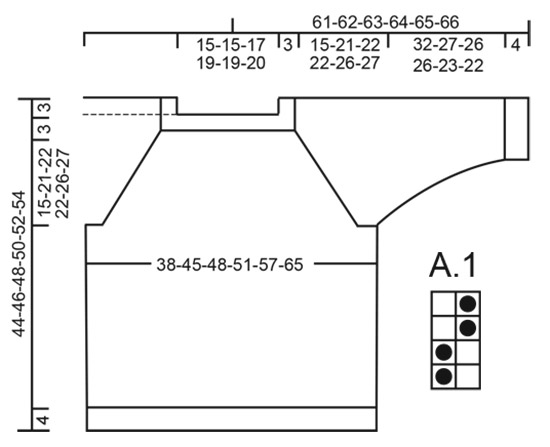 |
|||||||
Have you finished this pattern?Tag your pictures with #dropspattern #leconquetjumper or submit them to the #dropsfan gallery. Do you need help with this pattern?You'll find 22 tutorial videos, a Comments/Questions area and more by visiting the pattern on garnstudio.com. © 1982-2025 DROPS Design A/S. We reserve all rights. This document, including all its sub-sections, has copyrights. Read more about what you can do with our patterns at the bottom of each pattern on our site. |
|||||||













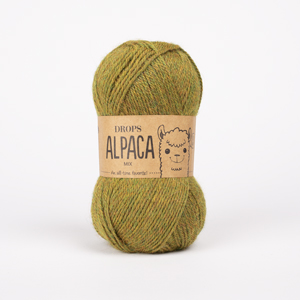
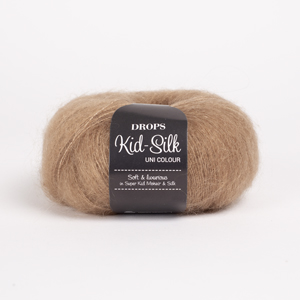


























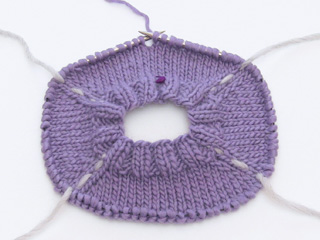















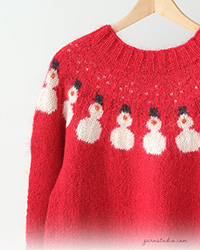
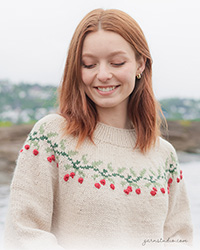
Post a comment to pattern DROPS 191-14
We would love to hear what you have to say about this pattern!
If you want to leave a question, please make sure you select the correct category in the form below, to speed up the answering process. Required fields are marked *.